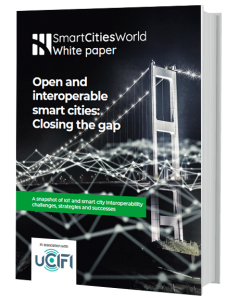uCIFI Mission & Value Proposition
uCIFI is specifying a unified data model & interface across multiple IoT networks including LoRaWAN, NB-IoT & an Open Source Sub-GHz MESH network to enable interoperability between vendors, drastically reduce integration complexity, risk and cost when developing & deploying Smart Cities & Utilities Applications.
uCIFI is specifying an open-source sub-GHz mesh wireless network with the same unified data model & interface, to complement the existing open LPWAN networks (LoRa and NB-IoT) and provide Device-To-Device open networking solutions to Smart Streetlight and Metering Applications.
uCIFI Key Benefits
The Unified Data model
- Enables interoperability;
- Prevents vendor lock-in;
- Simplifies and reduces integration cost and accelerate solutions and projects deployments
The Open Source Implementation
- Offers real openness
- Reduces solutions cost and increase mass adoption
- Is opened to future networks evolution
- Enables device & solutions providers not to be commoditized by proprietary network suppliers or network services operator
The Multi-Supplier & Interoperable approach
- Prevents vendor lock-in
- Stimulates competition and differentiating features
- Reduces cost and accelerate market adoption
The Multi-Transport architecture choice
- Enables to tackle all Smart Cities and Utilities Use Cases
- Reduces and simplify Integration cost and accelerate solutions and projects deployments
- Opens fully the IoT connectivity offer for Smart Cities & Utilities by providing alternative to closed proprietary mesh networks for power critical infrastructure
The open smart city: From strategic vision to reality

|
|
|
Openness and interoperability are the goal for many cities around the world. There’s a growing understanding that closed systems risk vendor lock-in, duplicated costs and silos, and could hamper what cities can do in the future.
Watch the replay of this webinar to get a snapshot of city sentiment around openness and interoperability, an overview of leading players’ progress and a look at what’s next to move from theory to reality.
Key Takeaways from this webinar to learn:
- Data and analysis from new research by SmartCitiesWorld and uCIFI, looking at the challenges to interoperability, examples of progress and remaining questions
- A case study from Sibelga, the distribution network operator for electricity and natural gas in the 19 municipalities of the Brussels Capital Region.
- The vendor’s view on openness and interoperability with Kerlink
- Insight into how industry leaders are collaborating to create a more open future through uCIFI Alliance, including the latest update on uCIFI’s data model
Open and interoperable smart cities: Closing the gap
As urbanization intensifies, cities are looking to solve a complex and evolving long-tail of challenges with technology, from cutting traffic congestion and ensuring citizen safety to reducing energy consumption and environmental footprint.
While the Internet of Things offers cities huge potential to benefit from a wealth of data, deployment continues to be slow, costly and complex.
Eighty two per cent of smart city pilots fail due to a lack of maturity.
The obstacles to deployment have meant some cities prefer to avoid investing in connected infrastructure altogether, fearing poor return on investment due to being locked into proprietary systems or having to pay for expensive integration.
This white paper, based on a survey of 75 city representatives, gives a snapshot of IoT and smart city interoperability challenges, strategies and successes.




